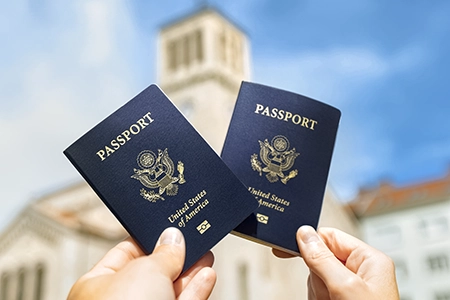Translating instructional content, particularly between languages as distinct as British English and Turkish, presents unique challenges beyond mere linguistic differences. It’s a task that demands not only a deep understanding of language but also an appreciation of the nuanced cultural, historical, and educational contexts of both nations. This blog post delves into the intricacies of translating educational materials between these two cultures. We’ll explore key areas such as educational philosophies, historical references, religious and secular perspectives, idiomatic expressions, social norms, language formality, and the use of visuals and symbolism. This exploration aims to shed light on the complexities of cross-cultural translation in education, offering insights for translators and educators alike in their quest to create both linguistically accurate, culturally resonant, and educationally enriching content.
Educational Contexts and Expectations
Understanding the educational philosophies and practices in the UK and Turkiye is essential for effectively translating instructional content. The British educational system encourages critical thinking, creativity, and student-led exploration. For instance, in a British classroom, students might be encouraged to debate, question, and form opinions on various topics. This approach reflects a broader educational philosophy that values independent thought and inquiry-based learning.

Before We Begin…
Looking for a top-notch Turkish translator? Haluk Aka Ltd. offers unparalleled expertise in translating instructional materials, textbooks and educational content. Whether it’s for academic or personal use, our team ensures accuracy and cultural relevance in every translation.
In contrast, the Turkish educational system traditionally emphasises rote memorisation, respect for authority, and structured learning. Here, students might be more accustomed to a teaching style focusing on memorising facts and figures and a hierarchical relationship between teachers and students. This difference in educational approaches can significantly influence how instructional content should be translated. For instance, a textbook section encouraging open debate and questioning might need to be adapted to fit a more structured Turkish classroom environment. The key is to strike a balance between maintaining the integrity of the original content and making it accessible and relevant to the target audience in Turkey.
Historical References and Examples
The cultural relevance of historical references and examples is vital in translation, especially in educational materials. British textbooks often include historical events, figures, and anecdotes that are familiar and meaningful to students in the UK but may not hold the same significance for Turkish students. For example, references to British historical events like the Battle of Hastings or the signing of the Magna Carta are pivotal in understanding British history and culture. However, these events might not resonate with Turkish students in a different historical context.
To bridge this gap, translators need to consider localising historical references. This doesn’t mean altering the historical facts but finding parallel events, figures, or anecdotes from Turkish history that convey a similar message or lesson. For instance, a significant Ottoman Empire event that aligns with the educational point could be used instead of a British historical event. This approach helps Turkish students connect more deeply with the material, making it more engaging and relevant. Maintaining the educational intent of the original content is a delicate balance while ensuring cultural relevance and comprehension for the new audience.
Religious and Secular Perspectives
The translation of instructional content between the UK and Turkey must be sensitive to these countries’ differing religious and secular landscapes. The UK, with its diverse religious landscape and predominantly secular approach to public life, often integrates educational content that reflects a variety of religious and secular viewpoints. In contrast, Turkey, where Islam is the predominant religion, may approach religious and secular themes differently, especially in educational settings.
This cultural difference necessitates careful consideration when translating content that touches on religious or philosophical themes. For instance, a textbook chapter discussing religious festivals in the UK might include a variety of Christian, Hindu, Sikh, and Muslim holidays. When adapting this for a Turkish audience, respecting Islamic sensibilities and highlighting Islamic holidays more prominently while still acknowledging other faiths to maintain inclusivity is important. Additionally, discussions around secularism, which in Turkey has a unique historical and cultural context deeply intertwined with the nation’s modernisation efforts, should be approached with an understanding of these nuances. The translator must skillfully navigate these sensitivities, ensuring that the translated material is respectful, accurate, and relevant to Turkish students, thus fostering a better understanding of religious and secular perspectives.
Translation of Idioms and Expressions
The challenge of translating idioms and expressions lies in their cultural specificity. British English is rich in idiomatic expressions that might not have direct or meaningful equivalents in Turkish. These idioms are often deeply rooted in British culture and history, making them challenging to translate in a way that preserves their original flavour while making sense to a Turkish audience.
For example, a common British idiom like “raining cats and dogs” used in an English textbook to explain heavy rainfall might baffle Turkish students if translated literally. Instead, a translator should find an equivalent Turkish expression that conveys the same sense of a torrential downpour. This approach maintains the idiom’s descriptive power while ensuring it resonates culturally with the students.
Moreover, it’s not just about finding direct equivalents; sometimes, an idiom must be completely rephrased to convey the intended meaning effectively. The translator’s role is to capture the essence and intent of these expressions, ensuring they contribute to the learning experience rather than detract from it. This process requires both linguistic skills, a deep understanding of British and Turkish cultures, and the creativity to bridge the gap between them.
Social Norms and Values
The differences in social norms and values between the UK and Turkey can significantly affect the translation of educational content. British society, known for its multiculturalism and liberal values, often discusses and debates a wide range of topics, including gender roles, sexuality, and political ideologies, in a relatively open manner. British educational materials often reflect this openness, which may include discussions and examples about these themes.
However, in Turkish society, which has unique social norms and values, certain topics might be considered sensitive or controversial. For instance, discussions on gender equality or LGBT+ rights, which are increasingly included in Western educational contexts, may need careful handling when translating for a Turkish audience. This doesn’t imply censoring these topics but rather presenting them in a way that is respectful and considerate of Turkish cultural sensitivities.
Translators must be acutely aware of these cultural differences and tactfully navigate them. The goal is to ensure that the translated content is culturally appropriate and does not inadvertently offend or alienate the audience. This requires a nuanced understanding of both cultures and the ability to convey ideas in a manner that is respectful, sensitive, and effective in fostering understanding and dialogue. The translator plays a crucial role in mediating between cultures, ensuring that educational content is linguistically accurate and culturally congruent.
Language Formality and Register in Translation
The use of formality and register in language varies significantly between British English and Turkish, impacting how instructional content is translated. In British English, the degree of formality in educational materials can vary. Still, there’s generally a trend towards using a more informal or conversational tone, especially in materials aimed at younger audiences. This approach is intended to make the content more relatable and engaging.
In contrast, Turkish language usage often distinguishes between formal and informal registers more clearly. Turkish has different levels of formality that are used depending on the context, the subject matter, and the relationship between the speaker and the listener. Educational materials, in particular, lean towards a more formal style, reflecting a cultural emphasis on respect and formality in educational settings.
When translating from British English to Turkish, it’s important to adjust the formality level to suit the Turkish audience’s expectations. For example, a chatty, informal tone common in British textbooks might need to be adapted to a more formal style to align with Turkish academic conventions. This adaptation helps ensure that the material is linguistically accurate and appropriate in tone and style for the students. The translator must be adept at gauging the appropriate level of formality and adeptly adjust the language to suit the cultural and contextual norms of the target audience. This skill is crucial in ensuring that the translated content is respectful, engaging, and effective in its educational purpose.
Visuals and Symbolism
The cultural significance of visuals and symbolism in educational content is an important consideration in translation. Certain images, symbols, and colours in British educational materials carry specific cultural connotations. These might include historical figures, landmarks, national symbols, or British literature and folklore references. However, these visuals may not hold the same meaning or relevance for a Turkish audience.
For example, a picture of a double-decker bus or a red telephone box might be instantly recognisable and culturally significant in the UK, evoking a sense of British identity and history. In contrast, these images might not resonate as strongly with Turkish students. Similarly, symbols like the Union Jack or references to British monarchs and folklore might need to be rethought for a Turkish audience.
In translating educational content, it’s important to consider whether the visuals used are appropriate and meaningful for the new audience. This might involve replacing certain images with more culturally relevant ones for Turkish students. For instance, a notable figure from Turkish history could be used to illustrate a similar concept or value instead of a British historical figure. The colours and symbols should also be evaluated for their cultural significance and appropriateness. The aim is to ensure that the visuals complement the text and enhance the learning experience rather than create confusion or disconnection due to cultural differences.
This aspect of translation extends beyond mere linguistic accuracy; it requires an understanding of visual literacy and cultural symbolism. The translator must be sensitive to the cultural context and perceptions of the target audience, ensuring that the visuals used in educational materials are engaging, appropriate, and enriching to the learning experience.
Final Word
Translating instructional content, such as textbooks, from British English to Turkish (and vice versa) is a complex task beyond literal translation. It involves a deep understanding of both the source and target cultures and their educational systems, social norms, and linguistic nuances. The translator acts as a bridge between these two worlds, conveying information and adapting it to resonate with the cultural and educational context of the audience.
This task requires sensitivity, adaptability, and creativity. A translator must be aware of the subtleties in each culture and how they influence perception and understanding. By considering factors like educational approaches, historical relevance, religious and secular perspectives, idiomatic expressions, social norms, language formality, and visual symbolism, the translator ensures that the content is understood, relevant, and respectful to the audience.
Effective translation can significantly impact learners in educational content, shaping their understanding and engagement with the material. It’s a responsibility that involves balancing fidelity to the original content with the cultural and linguistic realities of the target audience. The ultimate goal is to create educational materials that are accurate, informative, culturally enriching and engaging, fostering a deeper understanding and appreciation of our diverse world.

Before you go…
Looking for superior translation services that are fast, precise, and budget-friendly? Look no further! We offer top-notch translation solutions at unbeatable rates. Contact us now to get a quote and let us help you communicate effectively in any language.
Further Reading:
- Intercultural Communication: A Contextual Approach, James W. Neuliep – St. Norbert College



